
Shadow of a Doubt is a 1943 American psychological thriller film noir directed by Alfred Hitchcock, and starring Teresa Wright and Joseph Cotten. Written by Thornton Wilder, Sally Benson, and Alma Reville, the film was nominated for an Academy Award for Best Story for Gordon McDonell.
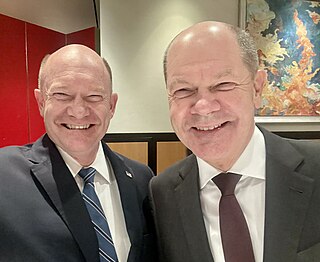
A look-alike, or double, is a person who bears a strong physical resemblance to another person, excluding cases like twins and other instances of family resemblance.

Money in the Bank is a novel by P. G. Wodehouse, first published in the United States on 9 January 1942 by Doubleday, Doran, New York, and in the United Kingdom on 27 May 1946 by Herbert Jenkins, London. The UK publication was delayed while Wodehouse was under suspicion of collaboration during the Second World War.

Cover Her Face is the debut 1962 crime novel of P. D. James. It details the investigations into the death of a young, ambitious maid, surrounded by a family which has reasons to want her gone – or dead. The title is taken from a passage from John Webster's The Duchess of Malfi: "Cover her face. Mine eyes dazzle; she died young," which is quoted by one of the characters in the novel.

One, Two, Buckle My Shoe is a work of detective fiction by Agatha Christie first published in the United Kingdom by the Collins Crime Club in November 1940, and in the US by Dodd, Mead and Company in February 1941 under the title of The Patriotic Murders. A paperback edition in the US by Dell books in 1953 changed the title again to An Overdose of Death. The UK edition retailed at seven shillings and sixpence (7/6) while the United States edition retailed at $2.00.

Bizarre, Bizarre is a 1937 French comedy film directed by Marcel Carné. It is based on the 1912 novel His First Offence by J. Storer Clouston.

The October Man is a 1947 mystery film/film noir starring John Mills and Joan Greenwood, written by novelist Eric Ambler, who also produced. A man is suspected of murder, and the lingering effects of a brain injury he sustained in an earlier accident, as well as an intensive police investigation, make him begin to doubt whether he is innocent.
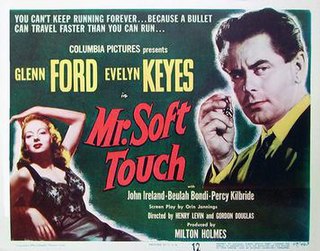
Mr. Soft Touch is a 1949 American film noir crime film directed by Gordon Douglas and Henry Levin and starring Glenn Ford and Evelyn Keyes. The film is also known as House of Settlement.
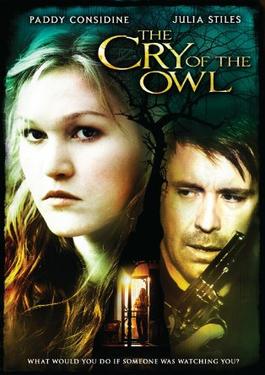
The Cry of the Owl is a 2009 thriller film based on Patricia Highsmith's 1962 book of the same name, and was directed by Jamie Thraves. It stars Paddy Considine, Julia Stiles, and Karl Pruner. This is the third filming of the book after the 1987 French film adaptation by Claude Chabrol and a German television adaptation titled Der Schrei der Eule also from 1987. After Robert Forrester is caught by Jenny Thierolf, the girl he has been spying on, he becomes the victim of her manipulative advances. The disappearance of Jenny's fiancé Greg after a fight with Robert marks the beginning of a series of dangerous and ultimately fatal incidents.

Pension Schöller is a 1952 West German comedy film directed by Georg Jacoby and starring Camilla Spira, Eva Ingeborg Scholz and Joachim Brennecke. It was made at the Tempelhof Studios in West Berlin. The film's sets were designed by the art director Erich Kettelhut. It is an adaptation of the 1890 play Pension Schöller by Wilhelm Jacoby and Carl Laufs. Georg Jacoby was Wilhem's son, and made three film adaptation of his father's best known play in 1930, 1952 and 1960.

Tante Trude aus Buxtehude is a 1971 West German comedy film directed by Franz Josef Gottlieb and starring Rudi Carrell, Ilja Richter and Theo Lingen. It was one of several German films in the wake of the 1959 film Some Like It Hot that used cross-dressing as a comic theme.

Gretel Wins First Prize is a 1933 German comedy film directed by Carl Boese and starring Lucie Englisch, Leopold von Ledebur and Jakob Tiedtke. It was shot at the Babelsberg Studios in Berlin. The film's sets were designed by the art director Willi Herrmann.
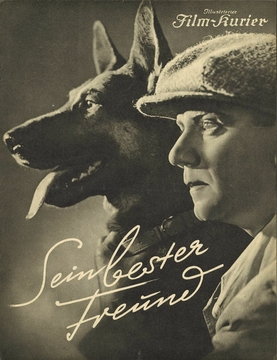
His Best Friend is a 1937 German crime film directed by and starring Harry Piel. It also features Edna Greyff, Henry Lorenzen and Lissy Arna. It was shot at the Johannisthal Studios in Berlin. The film's sets were designed by the art directors Karl Weber and Erich Zander. Piel had previously starred in a 1929 film of the same title.

Third from the Right is a 1950 West German musical crime film directed by Géza von Cziffra and starring Vera Molnar, Robert Lindner and Peter van Eyck. It was made by the Hamburg-based company Real Film at the Wandsbek Studios in the city. The film's sets were designed by the art director Herbert Kirchhoff.

The Girl of Last Night is a 1938 German comedy film directed by Peter Paul Brauer and starring Willy Fritsch, Georg Alexander and Hans Leibelt. It is set in England.
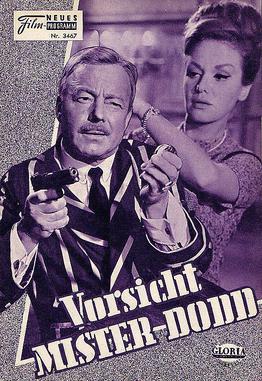
A Mission for Mr. Dodd is a 1964 West German comedy film directed by Günter Gräwert and starring Heinz Rühmann, Maria Sebaldt and Robert Graf. It was shot at the Bavaria Studios in Munich. The film's sets were designed by the art directors Willy Schatz and Robert Stratil. It is based on the 1962 hit West End play Out of Bounds by Arthur Watkyn.
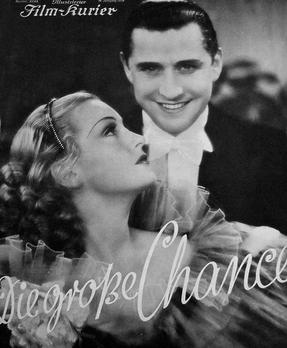
The Big Chance is a 1934 German musical comedy film directed by Victor Janson and starring Hansi Niese, Hans Söhnker and Jakob Tiedtke. It is part of the tradition of operetta films.
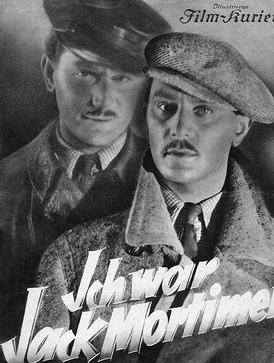
I Was Jack Mortimer is a 1935 German thriller film directed by Carl Froelich and starring Anton Walbrook, Eugen Klöpfer, and Sybille Schmitz. It was shot at the Tempelhof Studios in Berlin. The film's sets were designed by the art director Franz Schroedter. It is an adaptation of the 1933 novel of the same title by Alexander Lernet-Holenia.

Stopover in Orly is a 1955 French-West German romantic comedy crime film directed by Jean Dréville and starring Dany Robin, Dieter Borsche, Simone Renant and Heinz Rühmann. It was shot at the Bendestorf Studios near Hamburg and the Victorine Studios in Nice. The film's sets were designed by the art director Robert Giordani. Location shooting took place at Orly Airport, then the main airport for Paris.

The Call of the Jungle is a 1936 German adventure film directed by and starring Harry Piel and also featuring Paul Henckels, Ursula Grabley and Gerda Maurus. It was shot at the Johannisthal Studios in Berlin with sets designed by the art directors Karl Vollbrecht, Erich Grave and Artur Günther. Location shooting took place on Rügen in the Baltic Sea. It was based on a 1930 novel by Georg Mühlen-Schulte and features a hero in the style of Tarzan. The film premiered at the UFA-Palast am Zoo.



















